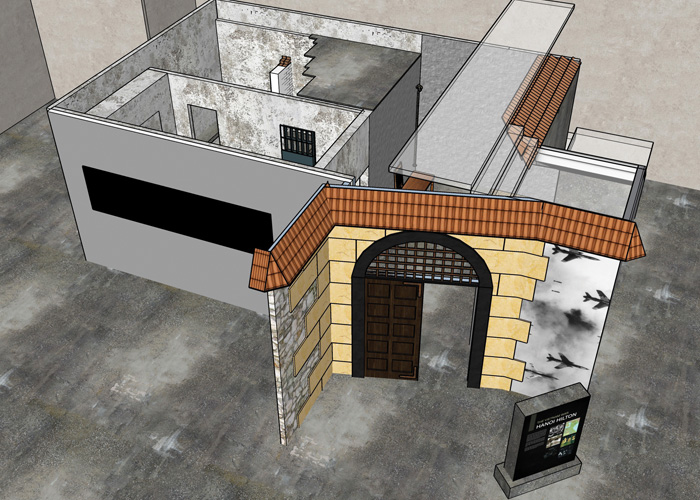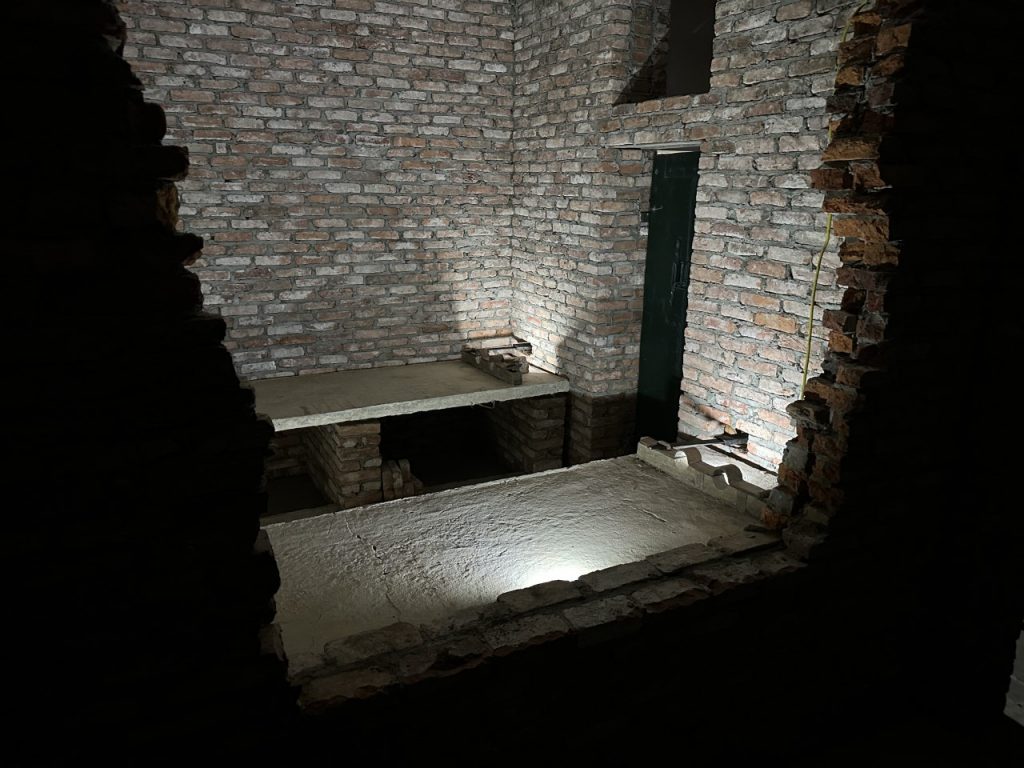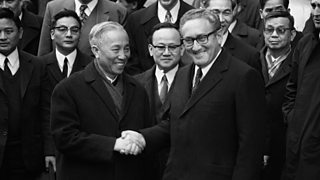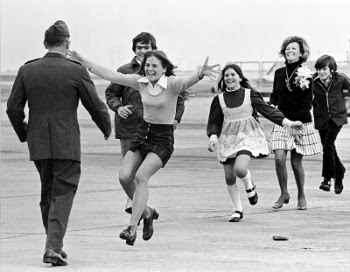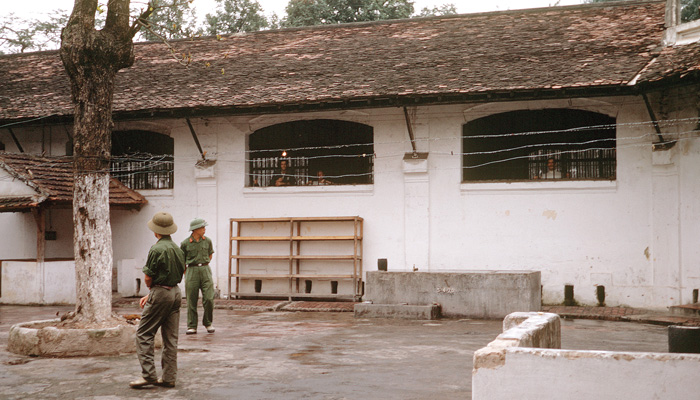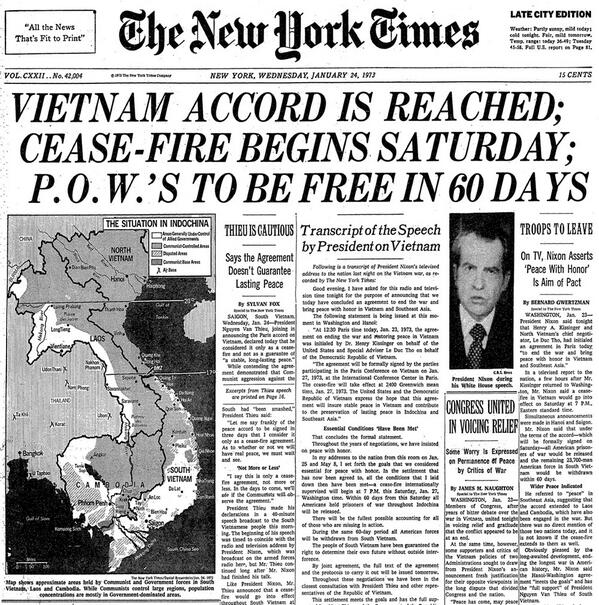
The Vietnam War, which lasted from 1955 to 1975, was a complex and divisive conflict that resulted in the deaths of over 58,000 American soldiers and an estimated 2 million Vietnamese civilians. The war officially ended with the signing of the Paris Peace Accords on January 27, 1973. The accords represented a major step towards peace and the return of American prisoners of war (POWs) who had been captured by the North Vietnamese.
The Paris Peace Accords were the result of extensive negotiations between the United States, South Vietnam, North Vietnam, and the National Liberation Front (NLF). The negotiations began in 1968 and were led by U.S. National Security Advisor Henry Kissinger and North Vietnamese diplomat Le Duc Tho (photo above). The accords consisted of a series of agreements that aimed to bring an end to the fighting and pave the way for a political settlement in Vietnam.
The most significant provision of the accords was the ceasefire agreement, which called for a cessation of hostilities between the United States, South Vietnam, and North Vietnam. The agreement also called for the 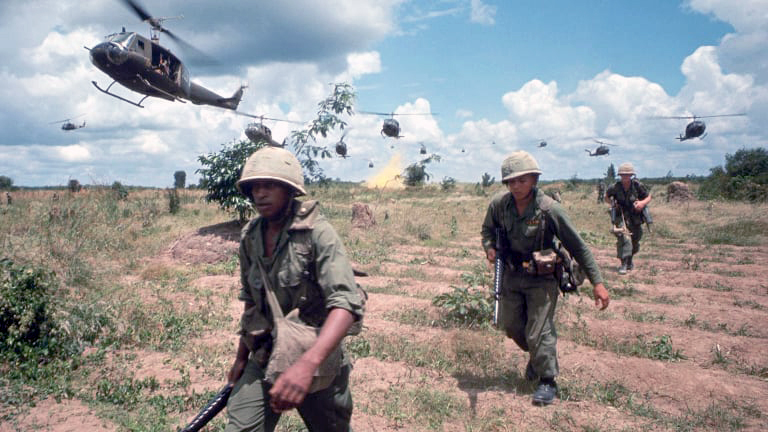 withdrawal of all U.S. combat troops from South Vietnam within 60 days of the signing of the accords.
withdrawal of all U.S. combat troops from South Vietnam within 60 days of the signing of the accords.
The accords also included provisions for the release of American POWs. The United States agreed to release all North Vietnamese prisoners of war, while North Vietnam agreed to release all American POWs within 60 days of the signing of the accords. The United States also agreed to pay reparations to North Vietnam for the damage caused during the war.
The war also resulted in the capture and imprisonment of hundreds of American soldiers, many of whom were held for years in brutal conditions.
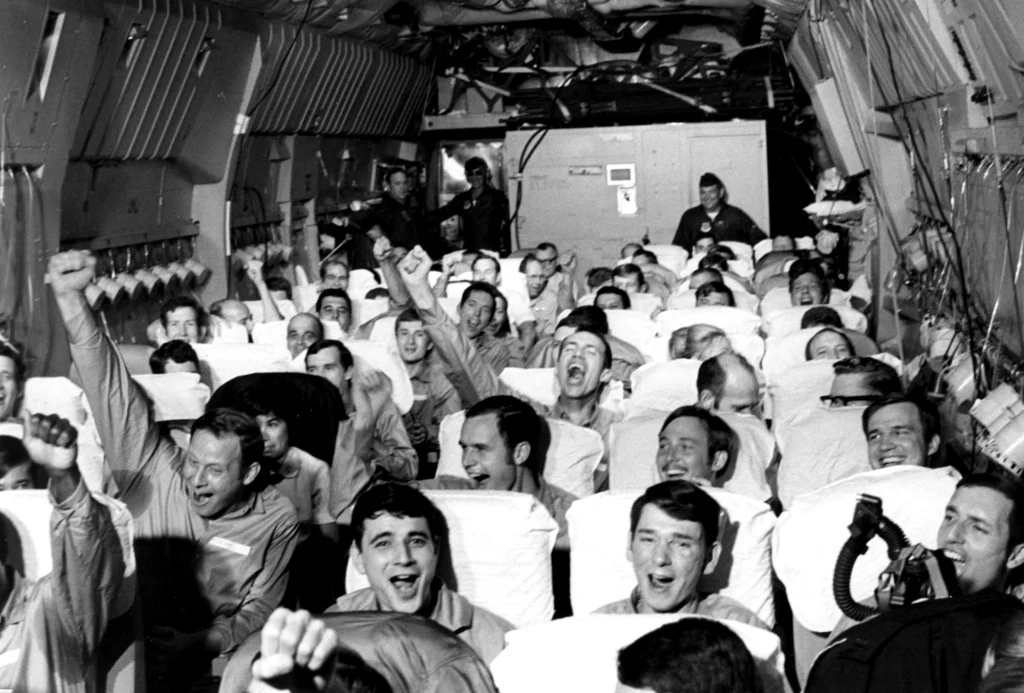
C-141A Starlifter transport jet with a distinctive red cross on its tail lifted off from Hanoi, North Vietnam, and the first flight of 40 U.S. prisoners of war began their journey home through Operation Homecoming.
The return of American prisoners of war was one of the most emotional and significant aspects of the Paris Peace Accords. Many of these soldiers had been held captive for years, subjected to torture and inhumane conditions. The release of these prisoners was seen as a symbol of hope and a step towards healing for the American people.
On February 12, 1973, the first group of American prisoners of war were released by the North Vietnamese government as part of Operation Homecoming. This group included 591 soldiers, who were flown to Clark Air Base in the Philippines for medical treatment and debriefing. Over the next several months, additional groups of prisoners were released, totaling 591 American soldiers.
The return of these prisoners was met with great joy and relief by the American people. Families and friends who had not seen their loved ones in years were finally reunited. The prisoners themselves were greeted as heroes and were honored with parades and ceremonies throughout the country. However, it is important to note that the Paris Peace Accords did not bring a lasting peace to Vietnam. The accords were not able to resolve the underlying political and ideological differences between North and South Vietnam. The war between North and South Vietnam continued, and the communist forces eventually captured Saigon, the capital of South Vietnam, on April 30, 1975. The fall of Saigon marked the end of the Vietnam War and the reunification of Vietnam under communist rule.
Thirteen prisons and prison camps were used to house U.S. prisoners in North Vietnam, the most widely known of which was Hỏa Lò Prison (nicknamed the “Hanoi Hilton”). Coined the “Hanoi Hilton” by American prisoner-of-war Robert Shumaker, the Hỏa Lò Prison became synonymous with the POW plight during the Vietnam War, and long after. Hundreds of American aviators became prisoners of war in the Hỏa Lò prison after being shot down in North Vietnam. Once there, they were subjected to extreme torture, isolation, and malnutrition while housed in squalid cells through years of captivity.
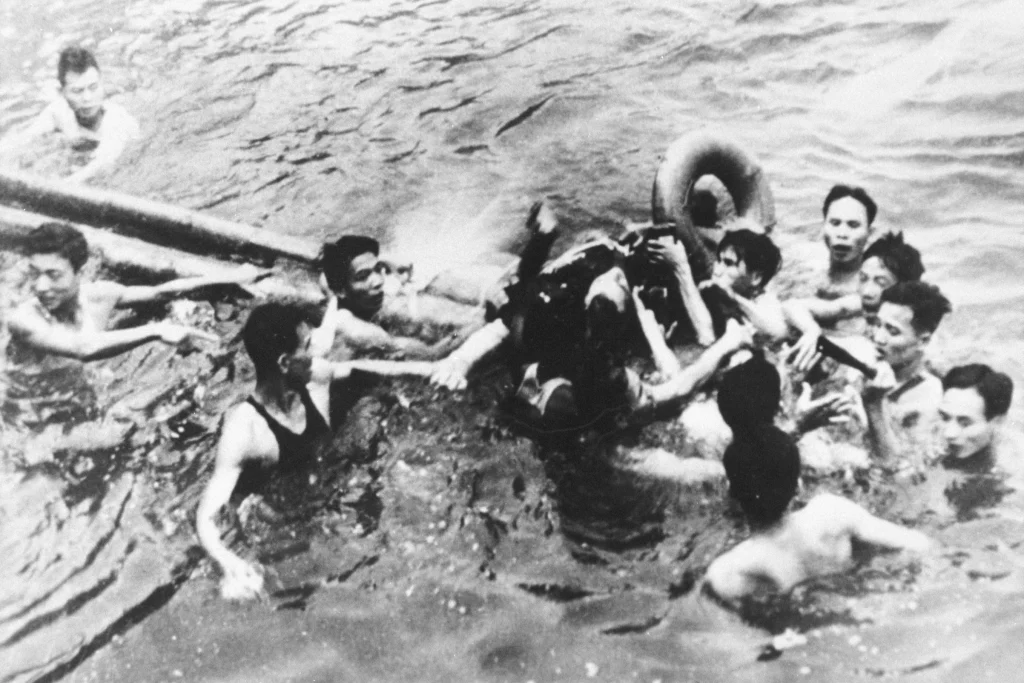
(photo above) Senator John McCain is pulled out of a Hanoi lake by North Vietnamese army soldiers and civilians on Oct. 26, 1967.
Several well-known veterans spent years in confinement at the Hoa Lo prison, including John McCain, James Stockdale, Bud Day, Joseph Kittinger, and many others. John McCain was tortured regularly for over five years, as was Bud Day. Navy pilot Everett Alvarez was interned in the Hanoi Hilton from August 1964 until February 1973, removed from the world for nearly a decade. On February 12, 1973, the first group of POWs were released from the notorious prison and began returning home to families who, in some cases, didn’t know if they were dead or alive.

The Hanoi Hilton exhibit in its final construction phase before opening to the public on February 12th, the 50th Anniversary of Operation Homecoming.
Now, fifty years later, the American Heritage Museum has built a lasting tribute to these POWs. On February 12th, 2023, our new Hanoi Hilton POW Exhibit will open to the public. Featuring the reconstruction of the last two remaining original cells that held Americans, first-hand accounts, and interactive displays, this exhibit offers a unique and intimate look at the physical and psychological challenges faced by American POWs during this tumultuous time. From the brutal interrogations to the countless acts of heroism and resilience, “The Hanoi Hilton” brings the incredible strength and courage of these brave men to life. Read more about this compelling exhibit by clicking here.
